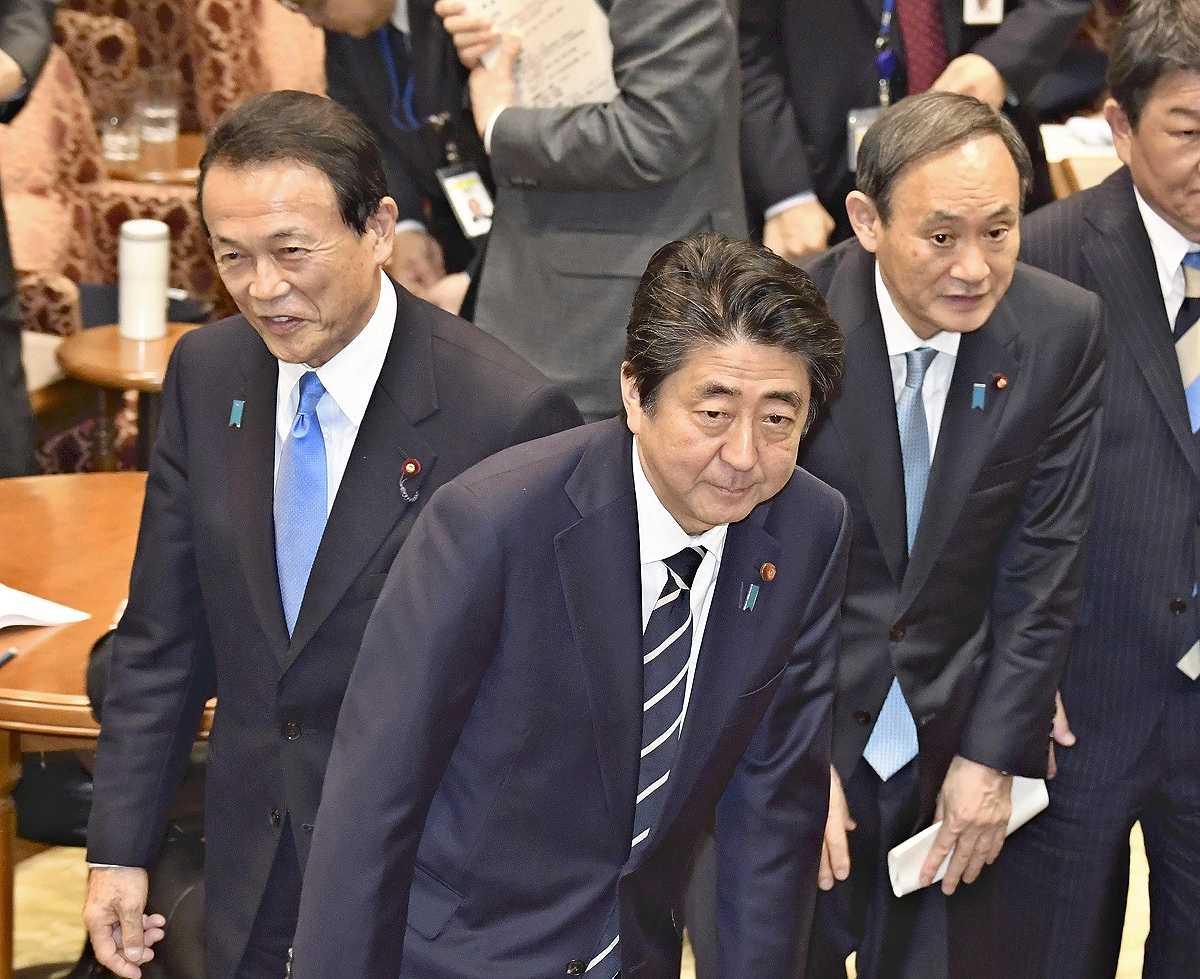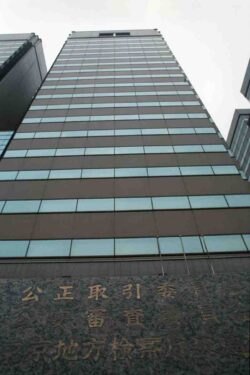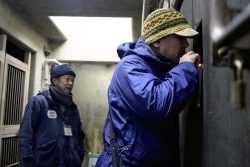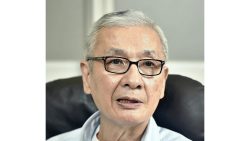State of LDP factions / Aso Defers to Boss Suga as He Tries to Reestablish Political Footing

From left, then Finance Minister Taro Aso, then Prime Minister Shinzo Abe, and then Chief Cabinet Secretary Yoshihide Suga attend the budget committee of the House of Councillors in March 2018.
17:35 JST, December 1, 2020
This is the third installment in a series examining the current state of the Liberal Democratic Party by looking at factions that were in the spotlight during the party’s presidential election this year.
***
As they dined at Japanese restaurant in a hotel in Tokyo’s Kioicho district on Oct. 17, Deputy Prime Minister and Finance Minister Taro Aso gave Prime Minister Yoshihide Suga a primer on the essence of diplomacy. Suga was preparing for his first overseas trip since becoming prime minister, and would set out the next day for Vietnam and Indonesia.
“Speak clearly. Shorten your sentences. These two things are what’s important at a summit meeting,” Aso said.
Aso, who had served as both prime minister and foreign minister, offered advice down to the finest detail, from what Suga should wear to how his wife Mariko should act as she makes she diplomatic debut. The dinner lasted 2-1/2 hours.
While the administration passed from former Prime Minister Shinzo Abe’s hands to Suga’s, Aso remained firmly ensconced as the deputy prime minister. Suga is nine years younger and has less political experience, but Aso always addresses Suga as “Prime Minister” in public and uses respectful language.
On Oct. 28, Suga faced questioning from party representatives for the first time at a plenary session of the House of Representatives. To make it easier for Suga to sit down when he returned to his seat after giving an answer, Aso casually turned the swivel chair, an action he repeated many times. Informed about it later by those around him, Suga expressed his gratitude at the Cabinet meeting two days later. “I didn’t notice,” he told Aso. “Thank you.”
While paying his utmost respect to Suga, Aso does not have the firm political standing in the current administration that he had in the Abe Cabinet. Abe, as a close ally, always lent an ear to Aso’s opinions on important issues. Aso, the No. 2 member of the administration both in name and reality, repeatedly said, “I support the administration from the absolute center.”
Aso and Suga, the chief cabinet secretary under Abe, often were at odds when it came to the administration’s policies or its strategy on dissolution of the lower house. Although Suga kept Aso — the leader of the ruling Liberal Democratic Party’s second-largest faction, which bears his name — in the No. 2 position, their relationship has always been tense.
When Aso learned of the Suga Cabinet’s lineup, he couldn’t help blurting out, “I can’t really make sense of these appointments.” Most perplexing to him was the appointment of Ryota Takeda, a member of the Nikai faction, to the post of Internal Affairs and Communications Minister. In April last year, Aso and Takeda clashed by supporting different candidates in the Fukuoka gubernatorial race, resulting in a fiercely divided election among conservatives.
Aso, dining with Abe at a Japanese restaurant in Tokyo’s Nishi-Shinjuku district on Nov. 10, asked the former prime minister, “When are you going back to the faction?” It was an unveiled push to get him to rejoin the Hosoda faction. Also at the dinner were associates from both factions — former National Public Safety Commission Chairperson Jun Matsumoto of the Aso faction, and Education, Culture, Sports, Science and Technology Minister Koichi Hagiuda of the Hosoda faction.
Even after Abe’s resignation as prime minister, Aso keeps in contact with him.
The Hosoda faction is the largest in the LDP and, combined with the Aso faction, accounts for nearly 40% of the party’s Diet members. A linking of the two factions would put the biggest check on Suga as he heads toward the expiration of his term as LDP president in September next year, a close aide to Aso said.
Aso turned 80 in September, but is still in high spirits, saying publicly in the Diet, “I’m not going to retire yet.” Aso can still play the card of having an LDP presidential candidate within his faction –Taro Kono, the minister in charge of administrative and regulatory reform.
In last September’s LDP presidential election, it appeared that Kono would run until the last minute. Some young members within the faction urged him on, and Environment Minister Shinjiro Koizumi also expressed his support. But Aso persuaded Kono to end the bid. “Look, you’re an important candidate for the LDP president of the Aso faction,” Aso told Kono at a meeting in his office on Aug. 31. “I want you to be the head of a strong administration.”
Aso determined that it would be more beneficial to support Suga at the time, rather than play a losing game and risk descending into fringe group status. Kono decided not to run, saying, “I can’t have our faction members being put on the spot like that.”
Kono, who is trying to implement Suga’s flagship policy of eliminating bureaucratic sectionalism, has raised his presence with his communication skills. He is solidifying his foundation in the LDP, organizing a study group called the Tuesday Club that brings together lawmakers from different factions. About 10 young faction members established a group called the Suspender Club, named after Kono’s trademark fashion item.
However, Kono’s calls to end nuclear power generation and consider the idea of a female-line Emperor have turned off some members of the Aso faction, mainly veterans. “I can’t recommend him,” said one lawmaker. On the other hand, Kono is close to Suga, as both were elected from constituencies in Kanagawa Prefecture. In the 2009 LDP presidential election, Suga left the Koga faction to support Kono.
“If the Aso faction does not support Kono with complete solidarity, then Suga may back [Kono] to break up our faction,” an aide of Aso said, showing concern that Kono may become a destabilizing factor.
A mix of bloodlines
The forerunner of the Aso faction was established in 1999, after a group led by former House of Representatives Speaker Yohei Kono broke away from the Miyazawa faction (Kochikai) in protest of that faction becoming the Kato faction in a leadership handover. In 2006, Aso inherited leadership of the group from Kono, launching it as his own faction with 15 members.
The official name Shikokai expresses the belief that it will be “a high-minded public policy group for the public benefit.” Kono was known as a dove, but as the Aso faction grows in number, more and more members are actively seeking to revise the Constitution.
Although the number remained below 20 for a long time, its influence has been expanding since the inauguration of the second Abe Cabinet.
In February 2017, a group led by Akira Amari, chairperson of the LDP Research Commission on the Tax System, joined the faction, and in July the same year, it merged with the Santo faction and a group led by Tsutomu Sato, chair of the LDP General Council. Lawmakers from various bloodlines have been united under Aso.
Currently, the faction comprises 54 politicians, including former Justice Minister Eisuke Mori and Shunichi Yamaguchi, the former minister in charge of Okinawa and northern territories affairs. An idea emerged to form a “Super Kochikai” by merging with the Kishida faction, the successor of the Miyazawa faction, but was never realized.
"Politics" POPULAR ARTICLE
-

Japanese Language Requirement Eyed for Permanent Residency Status; LDP Plans Revisions of Laws on Foreigners
-
-250x167.jpg)
Japan Eyes Plan to Accept Up To 1.23 Mil. Foreign Workers by End of Fiscal 2028
-

AI-Driven ‘Zero Clicks’ Phenomenon Threatens Democracy; News Outlets Must Be Able to Recover Costs, Stay Independent
-

Japanese Public, Private Sectors to Partner on ¥3 Tril. Project to Develop Domestic AI, SoftBank to Be Key Firm Involved
-

Japan’s Defense Ministry to Extend Reemployment Support for SDF Personnel to Age 65; Move Comes Amid Ongoing Labor Shortage
JN ACCESS RANKING
-

As Chinese Tourists Shun Japan, Hotels and Stores Suffer
-

Core Inflation in Tokyo Slows in December but Stays above BOJ Target
-

BOJ Gov. Ueda: Highly Likely Mechanism for Rising Wages, Prices Will Be Maintained
-

Osaka-Kansai Expo’s Economic Impact Estimated at ¥3.6 Trillion, Takes Actual Visitor Numbers into Account
-

Japan Govt Adopts Measures to Curb Mega Solar Power Plant Projects Amid Environmental Concerns
























